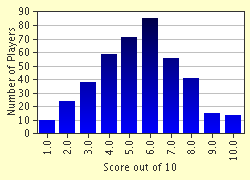Quiz Answer Key and Fun Facts
1. Béarnaise Sauce is made with egg yolks, white wine and butter and is often served atop vegetable dishes such as asparagus or artichokes or meat and fish dishes. It uses tarragon, shallots, chervil and red wine vinegar to give it its distinctive taste. The origin is disputed but the most popular theory seems to be which of the following?
2. If you see chicken with a cream sauce flavored with paprika and pink pepper from Hungary, what might it be called in French?
3. If you are dining in a fine French restaurant and you order this deluxe version of a decadent soufflé made with cream, dried fruit soaked in Eau-de-vie from Danzig or kirsch with little specks of glittering gold in it, and topped with fresh strawberries, which of these illustrious names goes with it?
4. Another French dish that is prepared with incredibly expensive ingredients was named for the star for whom it was prepared. Which of these opera stars inspired the recipe for tournedos using filet mignon, foie gras, rare black truffles, garlic, olive oil, croutons and Madera sauce?
5. We could say that this is a teen disaster that became one of the most famous recipes in the history of fine French cuisine. However, the teen wasn't working at a fast food but in the Café de Paris in Monte Carlo. Edward VII Prince of Wales was visiting that night when suddenly the waiter's pan caught on fire with the liqueur and the crepes were flambéed. The young man found it so delicious that he served it to the Prince and it became a favorite. As a young woman was present, the waiter named it for her. What was her name?
6. Legend has it that the classic French whipped cream or Chantilly was invented from a culinary accident under the auspices of the great chef Vatel. Why is it called crème Chantilly?
7. One of the classic sauces or preparations in French cuisine is "Marengo", i.e., "Poulet Marengo" or a chicken fricassee cooked in this sauce. For whom was this classic recipe prepared based on tomatoes, olive oil, garlic, parsley, egg, mushrooms, crayfish, white wine or cognac and croutons as a garnish?
8. No French cuisine quiz would be complete without tackling this sticky wicket of a question. Which of these theories has never been proposed for the origin of the word mayonnaise?
9. Any sauce that is derived from juices of fruit or vegetables pureed and now extended to seafood or what was called 'bisque' prior to this is called a "Coulis'. Why is it named coulis?
10. For auspicious occasions like weddings, baptisms and communions, many French have a 'piece montée' instead of a cake which is a construction made of "choux de patisserie à la crème", or puff pastries. What is the most common shape of 'piece montée' encountered at French festivities?
Source: Author
Bruyere
This quiz was reviewed by FunTrivia editor
Leau before going online.
Any errors found in FunTrivia content are routinely corrected through our feedback system.


